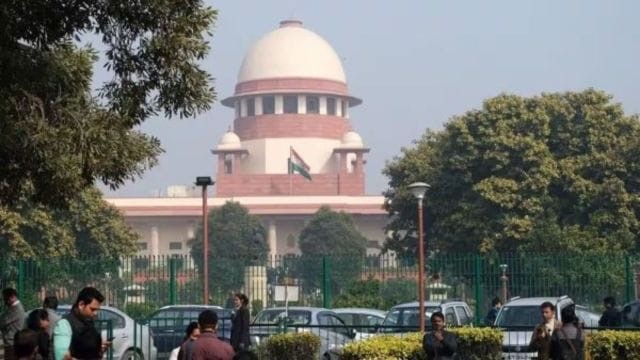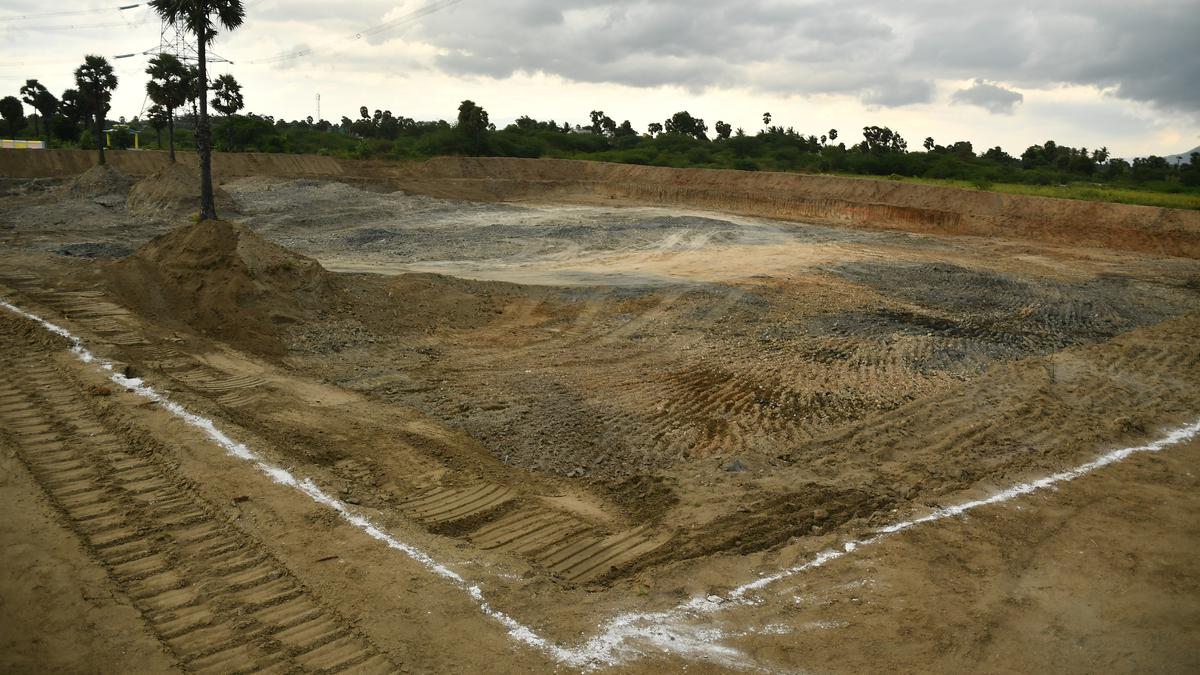NECTAR to Lead Agri-Tech Revolution
- 14 Mar 2025
In News:
In a major policy and scientific initiative, the Government of India is transforming the Northeast into the country’s next saffron cultivation hub, following the successful model of Jammu & Kashmir’s Pampore. The development is being led by the North East Centre for Technology Application and Reach (NECTAR), an autonomous body under the Department of Science and Technology (DST).
Mission Saffron and the Saffron Bowl Project
Originally launched in 2010–11 for Jammu and Kashmir, Mission Saffron was expanded to the Northeast in 2021 through the Saffron Bowl Project. The initiative now promotes saffron cultivation in Sikkim, Arunachal Pradesh, and Meghalaya, with further expansion planned for Nagaland and Manipur.
Saffron, derived from the stigmas of Crocus sativus, requires high-altitude (approx. 2000m), well-drained loamy or calcareous soils, and a dry to temperate climate. These agro-climatic conditions are present in parts of the Northeast, making it a viable region for saffron farming.
NECTAR’s Role in Agri-Tech and Regional Development
Established in 2014, NECTAR is driving technology-based interventions in agriculture, infrastructure, and economic development across the Northeastern states. The foundation stone for its permanent campus in Shillong was laid in March 2025 by Union Minister Dr. Jitendra Singh, marking a significant boost for scientific infrastructure in the region.
NECTAR's notable initiatives include:
- Saffron cultivation under the Saffron Bowl Project.
- Use of drone technology for land mapping under the Swamitva Yojana.
- Promotion of bamboo-based industries and honey production.
- Supporting indigenous technologies for sustainable rural development.
The Shillong campus is envisioned as a Centre of Excellence for advanced technological demonstrations and skill development, helping bridge last-mile gaps in technology adoption.
Significance for India’s Development
The Northeast is integral to India's aim of becoming a developed nation by 2047. Improvements in connectivity—roads, railways, and air links—have laid the groundwork for economic and scientific transformation in the region. The government sees the Northeast as a key growth frontier to unlock the country’s untapped potential.
Supersolid Light
- 14 Mar 2025
In News:
In a groundbreaking achievement, Italian scientists have successfully created the world’s first ‘supersolid’ made from light, marking a new milestone in quantum physics. This discovery demonstrates that light, traditionally understood as pure energy, can be manipulated into a rare state of matter that combines the order of a solid with the frictionless flow of a superfluid.
What Is a Supersolid?
A supersolid is an exotic quantum phase of matter exhibiting dual characteristics:
- Solid-like structure: Maintains a periodic, lattice-like spatial arrangement.
- Liquid-like behavior: Flows without internal resistance (zero viscosity), like a superfluid.
Previously, supersolidity was observed in Bose-Einstein condensates (BECs)—ultracold atomic systems cooled near absolute zero (–273.15°C), where quantum effects dominate.
How was Supersolid Light created?
Researchers used semiconductor nanostructures (gallium arsenide with micro-ridges) to create polaritons—hybrid quasiparticles formed by coupling photons (light) with excitons (matter).
- When cooled and stimulated with a laser, these polaritons condensed into a coherent quantum fluid arranged in a regular pattern, exhibiting both superfluid and solid-like properties.
Key Features of Supersolid Light:
- Quantum Coherence: Particles move in a synchronized, wave-like manner due to shared quantum states.
- Frictionless Flow: Can move through obstacles without energy loss.
- Crystalline Order: Particles maintain a rigid spatial configuration.
- Symmetry Breaking: Demonstrates both spatial order and dynamic fluidity.
Significance and Applications:
- Quantum Computing: Enhances qubit stability and coherence, essential for error-free quantum operations.
- Photonics and Optical Devices: Enables development of light-based circuits with high efficiency.
- Energy Technologies: Potential applications in superconductors and frictionless systems.
- Fundamental Research: Offers insights into non-equilibrium quantum systems and phase transitions.
Why it matters for Science & Technology?
This marks the first time light has been shown to form a supersolid, expanding the boundaries of material science. It provides a new experimental platform for studying quantum behavior in light-matter systems, bridging the gap between theoretical physics and practical innovation.
PM-ABHIM

- 14 Mar 2025
In News:
The Pradhan Mantri Ayushman Bharat Health Infrastructure Mission (PM-ABHIM) is a major Centrally Sponsored Scheme launched in 2021 to strengthen public health systems across India, with a focus on pandemic preparedness and infrastructure development at all levels of healthcare.
In March 2025, the Delhi government agreed to sign a Memorandum of Understanding (MoU) with the Ministry of Health and Family Welfare to implement PM-ABHIM, marking a policy shift after earlier resistance. Under the agreement:
- 553 existing Mohalla Clinics will be upgraded to Urban Ayushman Arogya Mandirs (U-AAMs).
- 413 new U-AAMs will be established.
- A total of 1,139 Urban AAMs will cater to Delhi’s primary healthcare needs.
Key Features of PM-ABHIM (2021–26):
- Total outlay: ?64,180 crore.
- Goal: Strengthen health infrastructure for effective response to future pandemics and disasters, and improve public health systems at primary, secondary, and tertiary levels.
- Scope: Combines Central Sector and Centrally Sponsored Scheme (CSS) components.
Major Components:
- 17,788 Sub-Centres asAyushman Arogya Mandirs (AAMs)in rural areas.
- 11,024 Urban AAMs, focusing onslum areas.
- 3,382 Block Public Health Units (BPHUs).
- 730 Integrated Public Health Labs (IPHLs)—one per district.
- 602 Critical Care Hospital Blocks (CCBs)in districts with populations above 5 lakh.
Governance & Implementation:
- Health being a State subject, implementation is carried out by State/UT governments.
- The MoHFW provides technical and financial assistance.
- Awareness and IEC (Information, Education, Communication) activities are integrated with other National Health Mission programs.
Nagorno-Karabakh Conflict
- 14 Mar 2025
In News:
In a landmark development, Armenia and Azerbaijan have finalized a peace agreement in 2024, aiming to end decades of hostilities over the Nagorno-Karabakh region—a flashpoint in the South Caucasus with deep-rooted ethnic and geopolitical tensions.
About Nagorno-Karabakh:
- A landlocked, mountainous region in the South Caucasus, referred to as Artsakh by Armenians.
- Located within internationally recognized Azerbaijani territory, but historically inhabited by ethnic Armenians.
- Features diverse geography: steppe lowlands, dense forests, and alpine meadows.
Historical Background:
- Soviet Era (1920s): USSR established Nagorno-Karabakh as an autonomous region within Muslim-majority Azerbaijan, despite its Armenian Christian majority.
- Post-USSR Collapse (1991): Karabakh declared independence; First Nagorno-Karabakh War (1988–1994) broke out.
- Result: Armenian forces took control of Nagorno-Karabakh and surrounding Azerbaijani districts.
- 2017: A referendum in Karabakh changed the government to a fully presidential system and renamed the region from Nagorno-Karabakh Republic to Republic of Artsakh.
- Second War (2020): Azerbaijan regained significant territory; thousands of soldiers were killed on both sides.
- 2023 Azerbaijani Offensive: In a swift one-day operation, Azerbaijan reasserted full control over the region.
- The Republic of Artsakh (unrecognized government) was officially dissolved in 2024.
- Over 1 lakh ethnic Armenians fled to Armenia.
India’s Position:
- India maintains a neutral stance, supports a peaceful diplomatic resolution under the aegis of the OSCE Minsk Group.
- Both Armenia and Azerbaijan are part of the International North-South Transport Corridor (INSTC), critical for India’s strategic connectivity and trade with Central Asia and Russia.
Mission Amrit Sarovar

- 14 Mar 2025
In News:
Launched in April 2022, Mission Amrit Sarovar is a Government of India initiative aimed at addressing water scarcity, particularly in rural areas, by constructing or rejuvenating 75 water bodies in every district, targeting over 50,000 ponds nationwide. As of October 2024, over 68,000 ponds have been completed.
Key Features:
- Minimum Pond Size: 1 acre with a water holding capacity of ~10,000 cubic metres.
- Community Participation: Sites approved by special Gram Sabha, with a Panchayat Pratinidhi supervising development.
- Multi-Ministerial Collaboration: Involves the Ministries of Rural Development, Jal Shakti, Panchayati Raj, Culture, Environment, and others.
- Technical Support: BISAG-N (Bhaskaracharya National Institute for Space Applications and Geo-informatics) is the technical partner, offering a dedicated portal and mobile app for tracking progress.
- Whole-of-Government Approach: Ensures coordinated implementation across ministries.
Railways' Involvement (2025 Initiative):
- Under Phase II of the mission, Indian Railways is tasked with:
- Desilting existing water bodies or constructing new ponds near railway tracks.
- Using excavated soil for railway embankments, where suitable.
- Coordinating with district authorities and the Ministry of Rural Development to identify appropriate sites.
- The goal is to complete a significant number of ponds by August 15, 2025.
- Promotes climate resilience, ecological balance, and sustainable water resource management.
